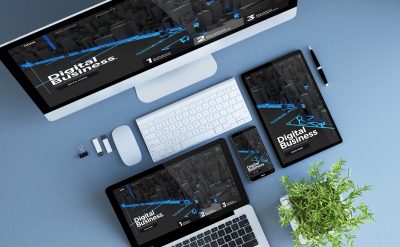It’s all about mobility solutions
Each day tech is enhancing itself, and each day there are new trends on the block. In this pandemic, more companies are managing remote employees, and there is a need for the most updated solution to control and protect the number of mobile devices and laptops.
Types of enterprise mobility solutions
- Machine learning-based protection
- Identity management
- File security and information rights management
- Mobile application and device management
- Virtualized access to data and apps with virtual desktop infrastructure (VDI)
- Mobile hypervisors and containers
How can one tell if your mobility management solution is out-of-date?
We have seen so many dramatic changes and improvements in managing endpoints such as rugged devices, smartphones, laptops, and tablets. However, legacy solutions are not enough, and many of them don’t address today’s vulnerabilities. Thus, to manage legacy systems and include must-have features, it is essential to conduct the annual assessment of your mobility management platform.
A rising number of mobile devices at the workplace plays an essential role for enterprises to have the proper solutions to manage all devices. Thus, vendors continuously update novel features to their mobility management solutions as new devices and use cases spring up.
To determine mobile operation success, IT administrators need to know more about user experiences and mobile solutions.
Now, talking about you. Are you worried that your mobility management solution is antiquated?
No need to worry. The following signs will help you find that your mobility management solution is out-of-date:
#First sign
You are stuck with mobile device management solutions –
- Mobile device management (MDM) is still a fundamental aspect of mobility management; thus, it should no longer be the only approach to keeping mobile devices in check.
- Unified endpoint management (UEM) and enterprise mobility management (EMM) solutions comprise MDM as a core capability along with other mobility management solutions, including content management, app management, and identity management.
- Above suites offer a much deeper dive into mobile security than just examining it on the device level. If your company uses older mobile device management software, it is time to switch to more enhanced software.
#Second sign
Your MDM solutions are not flexible enough –
- There will be fluctuation in your mobile device infrastructure over time.
- Novel devices will be on boarded for the replacement of old machines and to account for new employees. Thus, machines will get an upgrade with new operating systems.
- As these new devices appear, it is necessary to ensure that your mobility management solution is flexible and scalable.
- If your mobile fleet increases in size, some mobility management solutions offer plans that could only manage a few numbers of devices. Thus, limiting your options for enterprise mobility management.
#Third sign
MDM solutions not compatible with the latest devices –
- New mobile devices are ruling the market with their unique capabilities and features that could benefit businesses.
- If a mobility management tool loses compatibility with a device after an OS update, then your enterprise is dealing with a potentially unprotected device.
#Fourth sign
You do not have a clear idea of mobile user experience –
- MDM applications will not be helpful for your organization if your employees are not satisfied with using them. Thus, the improper use of mobile applications could decrease productivity.
- Using enhanced mobility management solutions could help your enterprise employees and clients to determine how to fix potential issues.
Mobile device and application management
MDM or mobile application management (MAM) solutions are specially designed for corporate users. They majorly offer dashboards and management environments to track and remotely control devices and apps across major platforms such as Windows, iOS, and Android.
Takeaway
User experience is a significant focus of your mobility plans. Understanding user or client and accordingly planning mobility solutions could benefit your enterprise. Because, in the end, if your employees are unhappy using the solutions you offer, you will never see any of the benefits. At the end of the day, flexibility is an important key.
So, if your mobility management solution is out-of-date, don’t wait, and upgrade it.
For more such content, download our latest whitepapers on mobility and mobility solutions.













